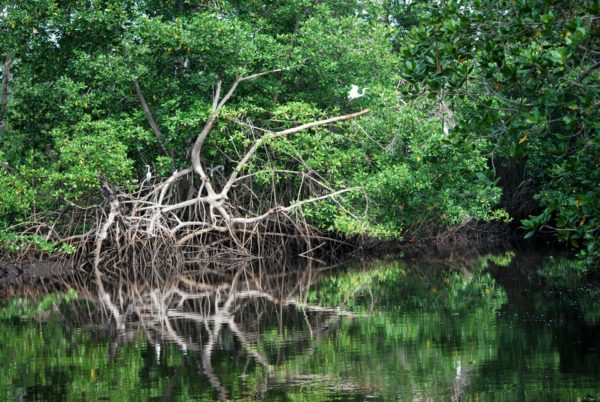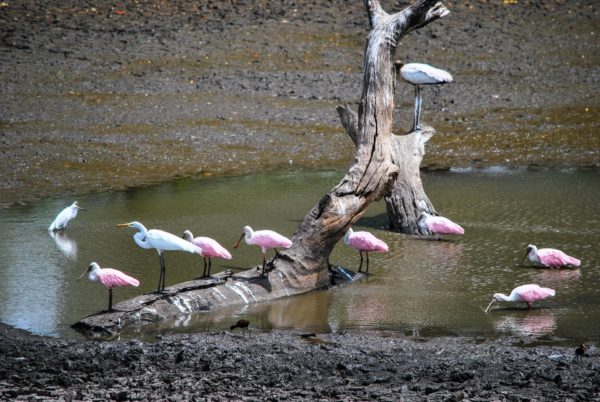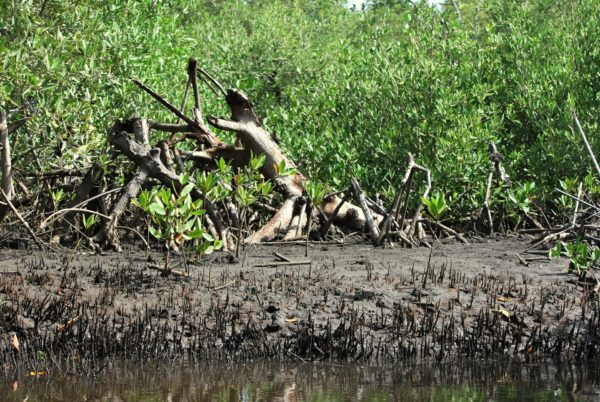Nicaragua’s Slumping Tourism is also Bad for Nature

When tourists stopped coming after the 2018 unrest, local Nicaraguans lost their incentive to protect the environment and turned to logging and poaching
HAVANA TIMES – On an early morning at low tide, Marcelo prepares his motorboat to take a group of people on a tour of the Isla Juan Venado Nature Reserve. As he pushes the boat out into the water and steers towards the reserve, he looks at the thinning mangroves with nostalgia.
“Before you couldn’t walk anywhere because of how dense it was; the biodiversity was incredible,” he says. “It was incredible how thick it all looked.”
Unfortunately, the situation has changed as more locals now go into the forest with machetes rather than tourists.
During a recent tour of the reserve, we are still able to see birds, iguanas, and crocodiles that edge into the brackish water to feed or bask in the sun. Years of experience have trained Marcelo’s eye to quickly spot the fauna camouflaged among the branches and interlaced roots of the mangroves, which serve as a protective barrier against wind, pollution, and erosion of the coastline.
There have been many changes over the years: The increase and decrease in tourism; the coming and going of park rangers; the changing of governments with their varying levels of involvement in the reserve. Even natural disasters.
But Marcelo is most concerned about the recent one-two punch of Nicaragua’s socio-political crisis and the Covid pandemic, which combined have further complicated the tenuous balance between the reserve’s ecosystem and the people who rely on it to make a living.

“There used to be a lot of reforestation, it was very nice. But now it’s all over. If there is no budget, there is no way [to reforest]. Especially with this government’s policy towards NGOs…” Marcelo’s voice trails off as he drags his thumb across his neck, finishing his sentence with a gesture that’s worth 1000 words.
Some 70,000 Nicaraguans working in the tourism sector lost their jobs during the most intense months of the rebellion in 2018, and the tourism industry has struggled to recover ever since, according to Lucy Valenti, president of the National Tourism Chamber.
Official government numbers from the Nicaraguan Tourism Institute (INTUR) show a 30% decrease in tourist arrivals between 2017 and 2018. A year after that, the government stopped reporting tourism numbers altogether.
Slumping tourism doesn’t just mean a lack of jobs. It’s also taking a toll on the nature reserve, as locals lose their incentive to care for the environment.
“A lot of people are unemployed because local people used to work in restaurants. But now, they’ve had to go to other fields. Some go fishing, others migrate to other places. Others chop firewood,” explains Santos Pravia, a member of a community ecotourism project called Cooperativa Palo de Oro.
The wildlife isn’t safe, either. Pravia says the situation is driving a growing number of people to hunt iguanas for food or kill the crocodiles for their leather.
Unfulfilled potential

Prior to 2018, Nicaragua was becoming an increasingly popular tourist destination. People came to discover the volcanoes, walk through beautiful colonial towns, and visit the white sand beaches and nature reserves. Isla Juan Venado was no exception.
Tourism here began slowly around 1995, but started to pick up dramatically five years later. At its peak, boat captains had to be careful not to crash into each other as tourists flocked to see the lush mangrove forest. Back then, guides were doing up to three tours a day. Now they’re lucky if they do one a month.
“Weekly visits were at around 250 to 300 people per week, sometimes 400 people would come to visit the island,” Pravia says, adding that 90% of the tourists who visited prior to 2018 were foreigners. “Now, sometimes 30 or 20 people arrive. Sometimes, a week goes by without visitors. Most visitors are nationals because there are almost no foreigners.”
On the day we toured the reserve, the only other boats on the water were filled with firewood, which local residents had chopped to sell in the city.
Local sustainability efforts

Marcelo believes the solution is for tour guides and other locals to work together on a green tourism plan that provides economic incentives for reforestation and sustainable management of the mangroves.
One way to do that, he says, is to organize voluntourism trips for environmentally conscious people who are interested in reforesting the nature reserve — something he’s done before.
His plan, Marcelo says, is to organize volunteer reforestation trips and use donations and tips from tourists to pay local woodcutters to plant trees rather than cut firewood, for 200 cordobas a day.
“That way, you achieve two things,” he explains; “you create awareness because now they know how to plant trees, instead of just cutting them. So they made a living that day, and you also planted a good mentality, a sense of purpose. You involved them in something beautiful.”
But with tourism at an all-time low, Marcelo’s plan is on hold as reforestation funds dry up.
Marcelo still plants trees when he can. He has some seedlings growing at home, which he plans to plant in the reserve after the rainy season has passed. He says he wants to do his part to restore the reserve to its former glory.
“I had the opportunity to see all that beauty, and I decided something could be done,” he says. “ I felt the need to give something back. The truth is, if you take care of it, you can get a lot of benefits out of it.”
Pravia, for his part, says he hopes there will come a day when the tourists return to Nicaragua “so that our lives can be more stable, the way they were before, or maybe even better”.
The mangroves hope so too.






Off course covid19 has bad for tourism travels and movement of economic activities. But Nicaragua is still my Dream. I hope Visit in this November 2022 and I send best photographs from Managua + another tourist distinctions.